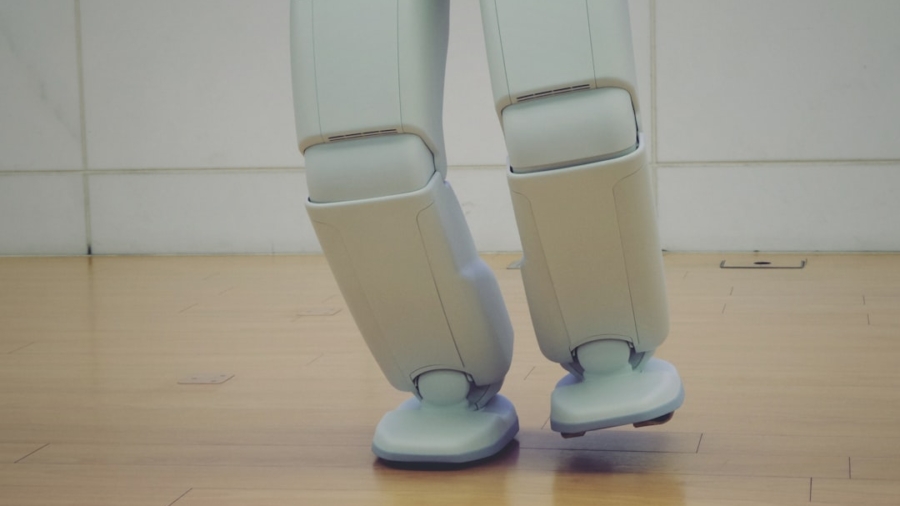The advent of technology has ushered in a new era of customer service, where humanoid robots are increasingly becoming integral to the customer experience. These robots, designed to mimic human appearance and behavior, are being deployed in various sectors, including retail, hospitality, and healthcare. Their introduction marks a significant shift in how businesses interact with customers, offering a blend of efficiency and engagement that traditional methods often lack.
As organizations seek to enhance customer satisfaction and streamline operations, humanoid robots present a compelling solution that combines advanced artificial intelligence with physical presence. Humanoid robots are not merely machines; they are sophisticated systems equipped with sensors, cameras, and algorithms that enable them to understand and respond to human emotions and behaviors. This capability allows them to engage with customers in a more personalized manner, providing assistance that feels more human-like.
The integration of these robots into customer service roles is not just a trend but a reflection of changing consumer expectations in an increasingly digital world. As customers become accustomed to rapid responses and personalized interactions, businesses are compelled to adapt, making humanoid robots a viable option for meeting these demands.
Key Takeaways
- Humanoid robots are becoming increasingly popular in customer service, offering a unique and innovative way to interact with customers.
- The benefits of using humanoid robots in customer service include improved efficiency, cost savings, and the ability to provide 24/7 support.
- However, challenges and limitations such as high initial costs, technical limitations, and potential job displacement need to be considered when implementing humanoid robots in customer service.
- Examples of humanoid robots in customer service include Pepper, Nao, and ASIMO, which are being used in various industries to assist customers and provide information.
- The future of humanoid robots in customer service looks promising, with advancements in technology and AI leading to more sophisticated and capable robots that can handle a wider range of tasks.
The Benefits of Using Humanoid Robots in Customer Service
One of the most significant advantages of employing humanoid robots in customer service is their ability to operate continuously without the need for breaks or downtime. Unlike human employees, who require rest and can be affected by fatigue or stress, humanoid robots can work around the clock, providing consistent service at any hour. This capability is particularly beneficial for businesses that operate in high-demand environments, such as airports or hospitals, where customer inquiries can arise at any time.
The ability to maintain a constant presence can lead to improved customer satisfaction as inquiries are addressed promptly. Moreover, humanoid robots can handle repetitive tasks with remarkable efficiency.
By automating these routine functions, businesses can free up human employees to focus on more complex and nuanced interactions that require emotional intelligence and critical thinking. This division of labor not only enhances operational efficiency but also allows for a more enriched customer experience, as human staff can devote their attention to providing personalized service where it matters most.
Challenges and Limitations of Humanoid Robots in Customer Service

Despite the numerous benefits associated with humanoid robots in customer service, several challenges and limitations must be addressed. One primary concern is the technology’s current limitations in understanding and processing human emotions accurately. While advancements in artificial intelligence have made it possible for robots to recognize basic emotional cues through facial expressions or voice tone, they often struggle with the subtleties of human interaction.
This limitation can lead to misunderstandings or inappropriate responses, which may frustrate customers rather than enhance their experience. Additionally, the initial investment required for deploying humanoid robots can be substantial. Businesses must consider not only the cost of the robots themselves but also the necessary infrastructure upgrades, maintenance, and ongoing software updates.
For smaller enterprises or those operating on tight budgets, this financial barrier can be prohibitive. Furthermore, there is the challenge of integrating these robots into existing workflows without disrupting established processes. Training staff to work alongside humanoid robots and ensuring seamless collaboration between human employees and machines is essential for maximizing the benefits of this technology.
Examples of Humanoid Robots in Customer Service
Several notable examples illustrate the successful implementation of humanoid robots in customer service settings. One prominent case is that of Pepper, a humanoid robot developed by SoftBank Robotics. Pepper has been deployed in various retail environments, including stores like Carrefour in France and banks such as HSBEquipped with advanced natural language processing capabilities, Pepper can engage customers in conversation, answer questions about products or services, and even provide recommendations based on customer preferences.
Its friendly demeanor and ability to interact with customers have made it a popular addition to these retail spaces. Another example is the use of humanoid robots in hospitality settings. The Henn-na Hotel in Japan famously employs robots for various tasks, including check-in and concierge services.
Guests are greeted by robotic staff members who can communicate in multiple languages and assist with luggage handling or room service requests. This innovative approach not only enhances the guest experience but also aligns with Japan’s technological advancements and cultural fascination with robotics. The Henn-na Hotel serves as a testament to how humanoid robots can redefine traditional hospitality roles while maintaining high service standards.
The Future of Humanoid Robots in Customer Service
Looking ahead, the future of humanoid robots in customer service appears promising as technology continues to evolve. With advancements in artificial intelligence and machine learning, we can expect these robots to become increasingly adept at understanding complex human emotions and responding appropriately. Future iterations may incorporate more sophisticated algorithms that allow for deeper contextual understanding, enabling them to engage in more meaningful conversations with customers.
Moreover, as consumer acceptance of robotic assistance grows, businesses may explore new applications for humanoid robots beyond traditional customer service roles. For instance, they could be utilized for training purposes, helping new employees learn about products or services through interactive simulations. Additionally, as societal norms shift towards greater reliance on technology for everyday tasks, humanoid robots may become commonplace in various sectors beyond retail and hospitality, including education and healthcare.
Ethical Considerations of Using Humanoid Robots in Customer Service

The integration of humanoid robots into customer service raises several ethical considerations that warrant careful examination. One significant concern revolves around privacy and data security. As humanoid robots interact with customers, they often collect personal information to provide tailored services.
Businesses must ensure that they handle this data responsibly and transparently, adhering to regulations such as the General Data Protection Regulation (GDPR) in Europe. Failure to protect customer data could lead to breaches of trust and legal repercussions. Another ethical consideration involves the potential impact on employment.
The introduction of humanoid robots may lead some to fear job displacement for human workers in customer service roles. While it is true that automation can replace certain tasks traditionally performed by humans, it is essential to recognize that these technologies can also create new opportunities for employment in areas such as robot maintenance, programming, and oversight. Striking a balance between leveraging technology for efficiency while ensuring that human workers are valued and supported is crucial for fostering a sustainable workforce.
How Humanoid Robots are Changing the Customer Service Industry
Humanoid robots are fundamentally altering the landscape of the customer service industry by introducing new paradigms of interaction between businesses and consumers. Their ability to provide immediate assistance has transformed expectations around response times; customers now anticipate quick resolutions to their inquiries without waiting in long lines or navigating complex phone menus. This shift has prompted businesses to rethink their service strategies and invest in technologies that enhance efficiency while maintaining a personal touch.
Furthermore, the presence of humanoid robots can enhance brand image and differentiation in competitive markets. Companies that adopt cutting-edge technology often position themselves as innovators within their industries, attracting tech-savvy consumers who appreciate forward-thinking approaches. The novelty of interacting with a humanoid robot can also create memorable experiences that encourage word-of-mouth marketing and customer loyalty.
The Impact of Humanoid Robots on Customer Service
The impact of humanoid robots on customer service is profound and multifaceted. As they become more prevalent across various industries, these robots are reshaping how businesses interact with their customers while enhancing operational efficiency and satisfaction levels. While challenges remain regarding emotional understanding and ethical considerations, the potential benefits far outweigh the drawbacks when implemented thoughtfully.
As we move forward into an increasingly automated future, it is essential for businesses to embrace this technology while remaining mindful of its implications for society at large. By leveraging the strengths of humanoid robots alongside human employees, organizations can create a harmonious balance that maximizes both efficiency and empathy in customer service interactions. The journey toward integrating humanoid robots into everyday business practices is just beginning, but their potential to transform the customer service landscape is undeniable.
In the rapidly evolving landscape of customer service, humanoid robots are increasingly being explored for their potential to enhance customer interactions and streamline service processes. An interesting related article that delves into technological advancements, albeit in a different domain, is “The Best Apple Laptops 2023.” This article, available at The Best Apple Laptops 2023, provides insights into the latest innovations in consumer technology, which parallels the advancements seen in humanoid robotics. Both fields are driven by a commitment to improving user experience and efficiency, highlighting the broader trend of integrating cutting-edge technology into everyday applications.
FAQs
What are humanoid robots?
Humanoid robots are robots designed to resemble and mimic human physical appearance and behavior to some extent. They are typically equipped with human-like features such as a head, torso, arms, and legs, and are often capable of interacting with humans in a human-like manner.
What is the role of humanoid robots in customer service?
Humanoid robots are being increasingly used in customer service roles to interact with customers, provide information, answer questions, and assist with various tasks. They can be deployed in retail stores, hotels, airports, and other service-oriented environments to enhance the customer experience.
How do humanoid robots benefit customer service?
Humanoid robots can benefit customer service by providing a consistent and reliable interaction experience for customers, reducing the workload of human staff, and freeing up human employees to focus on more complex or specialized tasks. They can also operate 24/7 and are not subject to human limitations such as fatigue or mood swings.
What are some examples of humanoid robots used in customer service?
Examples of humanoid robots used in customer service include Pepper, developed by SoftBank Robotics, which has been deployed in various retail and hospitality settings, and Tally, developed by Simbe Robotics, which is used for inventory management in retail stores.
What are the limitations of humanoid robots in customer service?
Limitations of humanoid robots in customer service include their current inability to fully replicate human emotional intelligence and empathy, as well as their reliance on technology that may be prone to malfunctions or errors. Additionally, some customers may feel uncomfortable or hesitant interacting with humanoid robots.

